The coffee-table portraits, which sell for up to £45,000 each, are visually stunning, unashamedly glamorous and have been seen in many of the world’s glossy magazines and leading galleries. But this week British photographer Jimmy Nelson’s stylised pictures of African, Asian and Amazon Indian groups have been roundly dismissed as “wrong” by community leaders as well as being called “false and damaging” by the world’s leading defender of indigenous peoples.
According to Stephen Corry, director of Survival International, the pictures, many of which are collected in Before They Pass Away, a book selling for £100 or over £5,000 in a limited edition, are more akin to high fashion than reality. He says in an essay in online US magazine Truthout that Nelson’s “claim that it’s the ‘irreplaceable ethnographic record of a fast disappearing world’ is wrong – from pretty much every angle”.
Corry adds that some of the pictures are “just a photographer’s fantasy, bearing little relationship either to how these people appear now, or how they’ve ever appeared. Of course, rendering people more exotic than they really are is a timeworn tradition.”
“The images look like a throwback to a past era, but they’re also a contemporary invention,” writes Corry. ““His Waorani [the Waorani Indians of Ecuador] female models have now preserved their modesty by tying “fig” leaves into their waist string, which they would never have done formerly.” Corry also criticises the book’s description of the Dani of West Papua as a dreaded head-hunting tribe, without mentioning accusations of killings, torture and intimidation under Indonesian occupation.
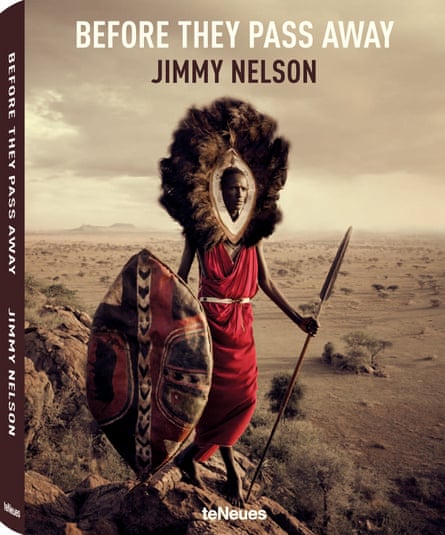
Indigenous leaders this week weighed in to the debate, saying that Nelson’s pictures reflected neither political nor historical reality.“I saw the photos and I didn’t like them,” said Brazilian Yanomami spiritual leader Davi Kopenawa, who was recently in London. “This man only wants to force his own ideas on the photos, to publish them in books and to show them to everyone so that people will think he’s a great photographer. He does whatever he wants with indigenous peoples. It is not true that indigenous peoples are about to die out. We will be around for a long time, fighting for our land, living in this world and continuing to create our children.”
Papuan tribal leader Benny Wenda, now based in Oxford, said: “What Jimmy Nelson says about us is not true. My people, the Dani people, were never headhunters, it was never our tradition. The real headhunters are the Indonesian military who have been killing my people. My people are still strong and we fight for our freedom. We are not ‘passing away’, we are being killed by the brutal Indonesian soldiers. That is the truth.”
This month Nixiwaka Yawanawá from Acre state in Brazil protested outside Nelson’s exhibition in London. “As a tribal person I feel offended by Jimmy Nelson’s work Before They Pass Away. It’s outrageous! We are not passing away but struggling to survive. Industrialised society is trying to destroy us in the name of ‘progress’, but we will keep defending our lands and contributing to the protection of the planet,” he said.
Nelson responded, saying his pictures of Kazakh, Himba, Huli, Kalam, Goroka, Maori and other peoples are celebratory, and intended to be aesthetic rather than factual. “There is no sociology, no statistics. It’s how I see the world. I am aiming to document the variety and importance of what is left of indigenous culture. Yes, it’s idealistic. Indigenous peoples are usually portrayed [by groups like Survival] as impoverished. But they have a wealth and a pride. It’s not only about material possessions. I shoot from a very personal, aesthetic point of view. Different people can interpret what they like.”
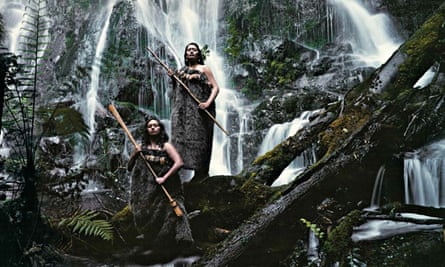
He said his portraits echo pictures of a model such as Kate Moss.“You can picture here on the beach with a fag coming out of her mouth or in a studio.”
Unembarrassed by the stratospheric price his photographs can command, Nelson said he is open about not paying the tribal groups even though they are acting as his models. “No money changes hands. You offer food, a ritual party with a goat or a cow. I spend a lot of time ingratiating myself. It’s narcissism. It’s playing on their vanity,” he says. “In coming years I will go back with a film crew to these communities and ask them if I was right. We will talk about perceptions of wealth.
“The only negative reaction has come from Survival International. I think they have a hidden agenda, but I will not say more. It’s a pity. We are both trying to save the same thing.”
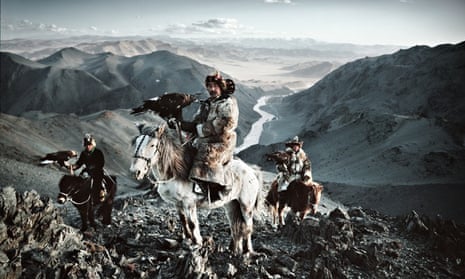



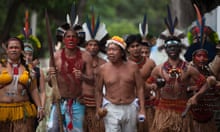
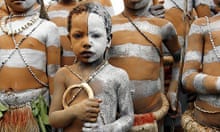


Comments (…)
Sign in or create your Guardian account to join the discussion